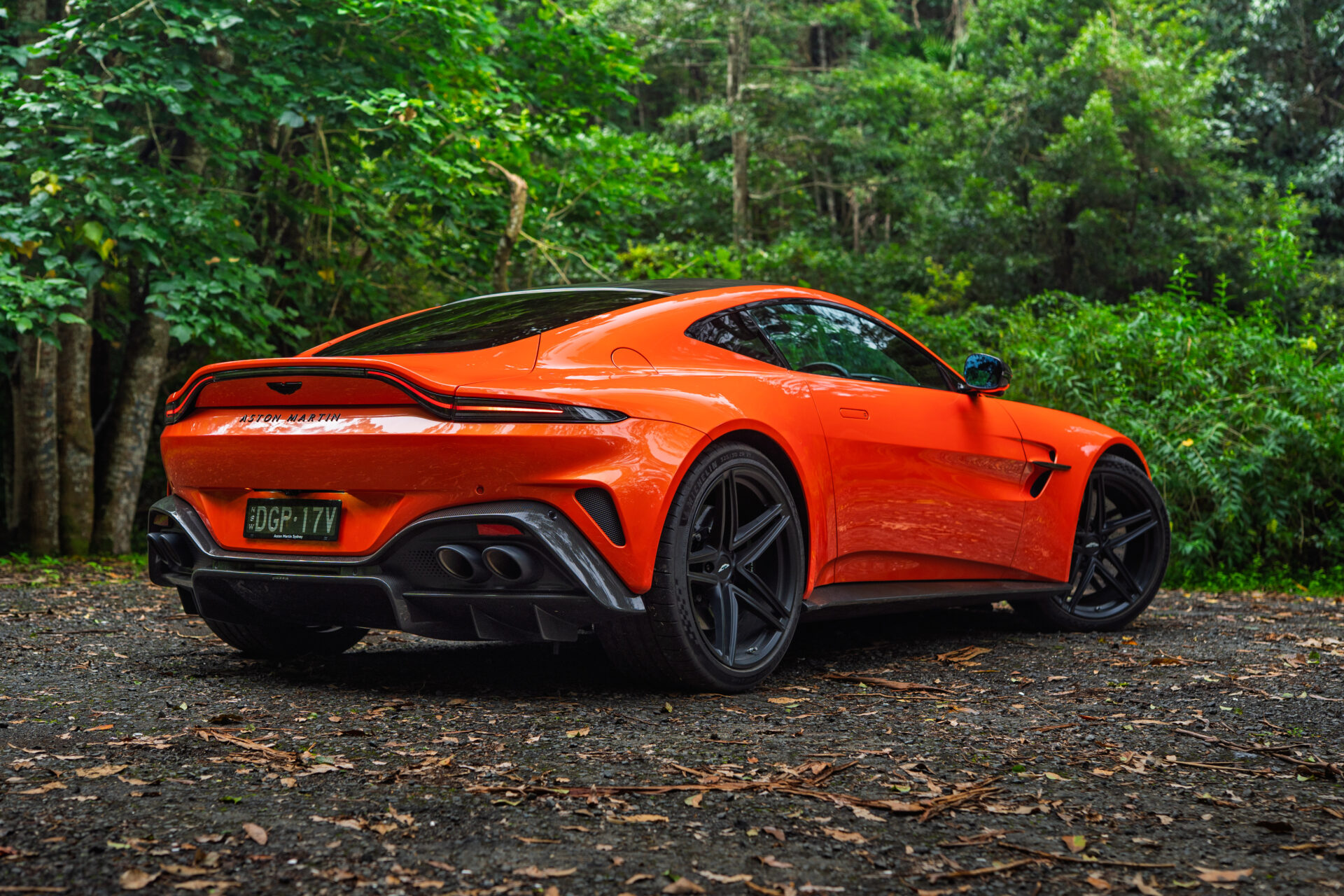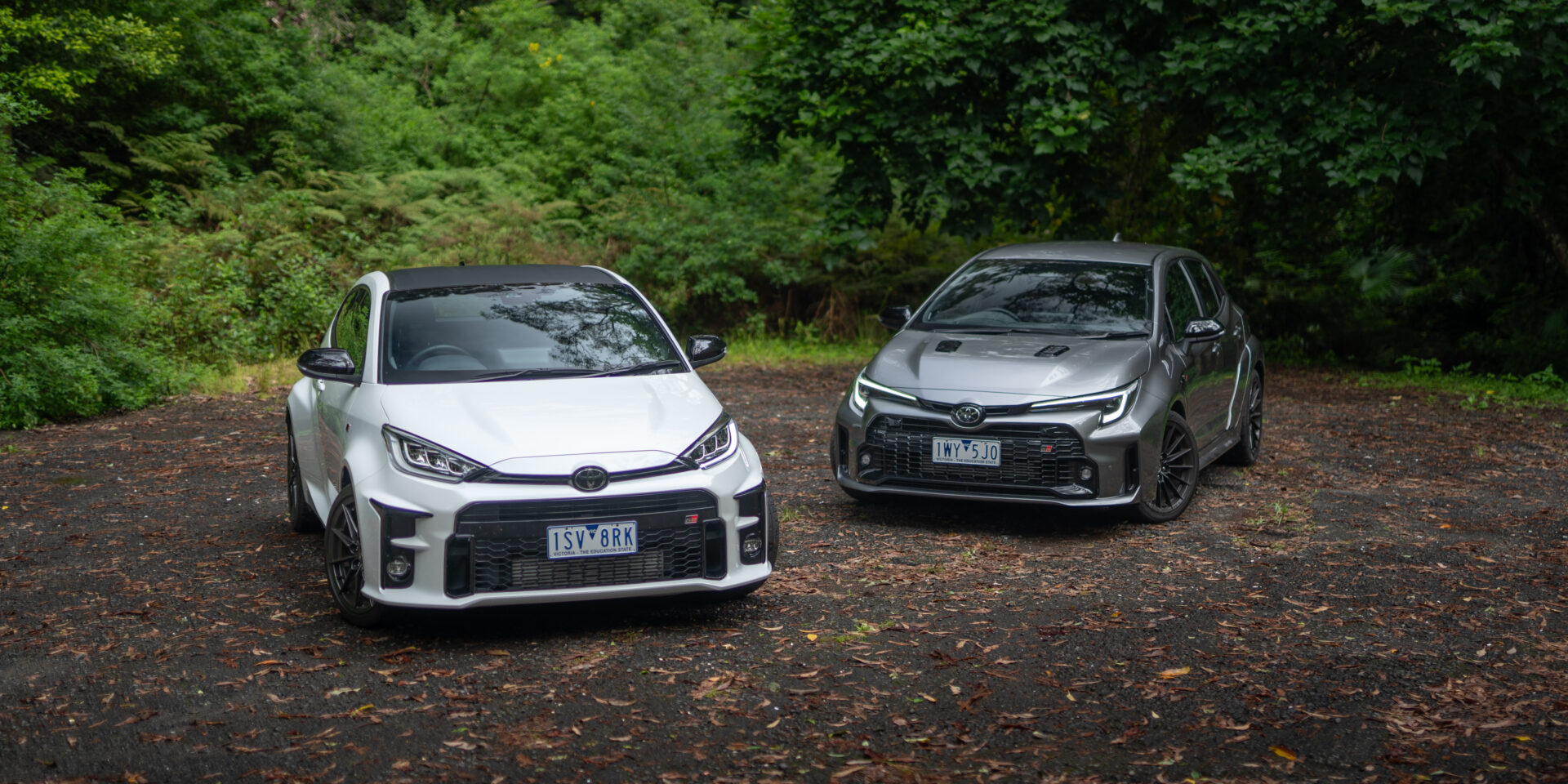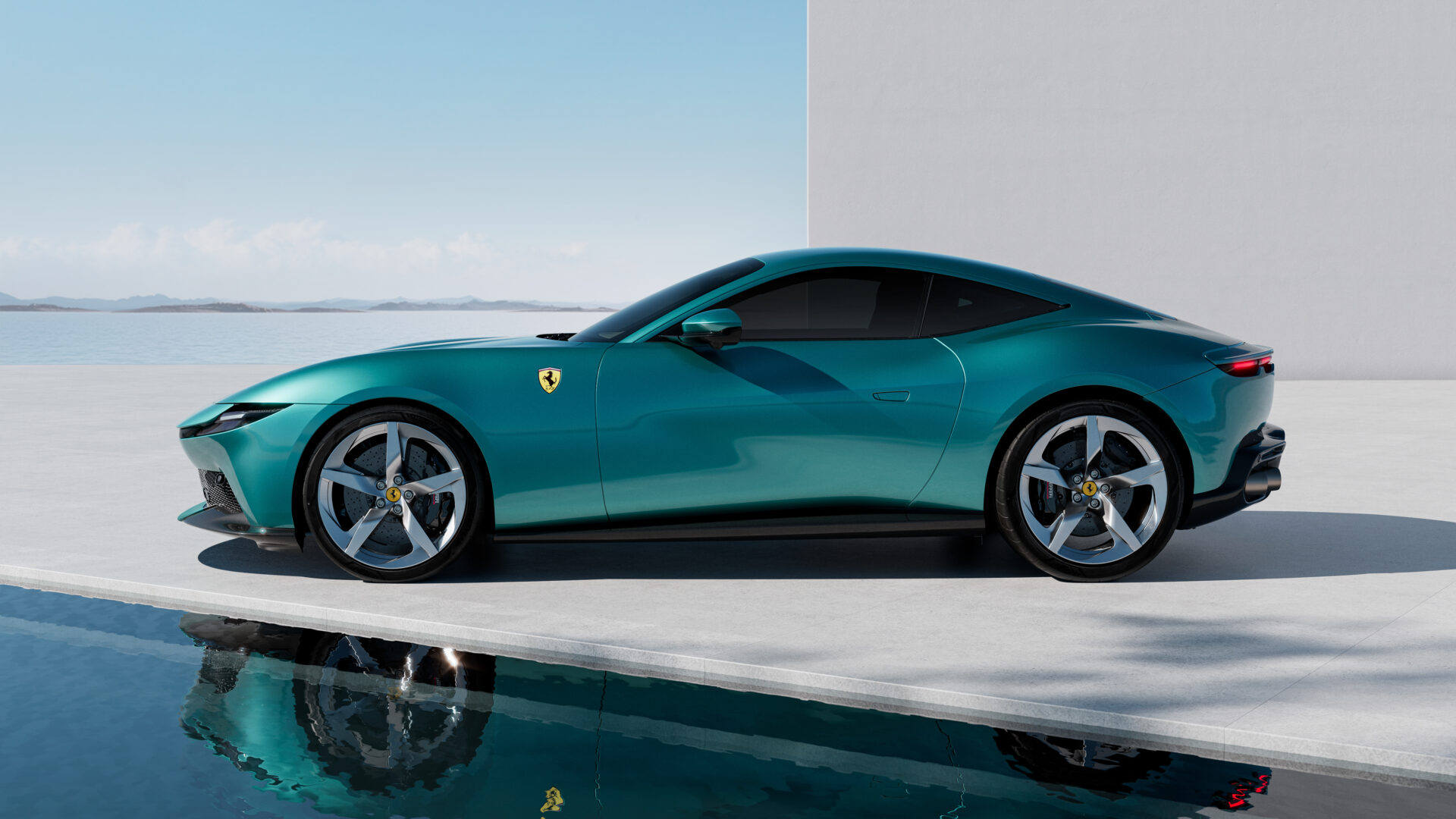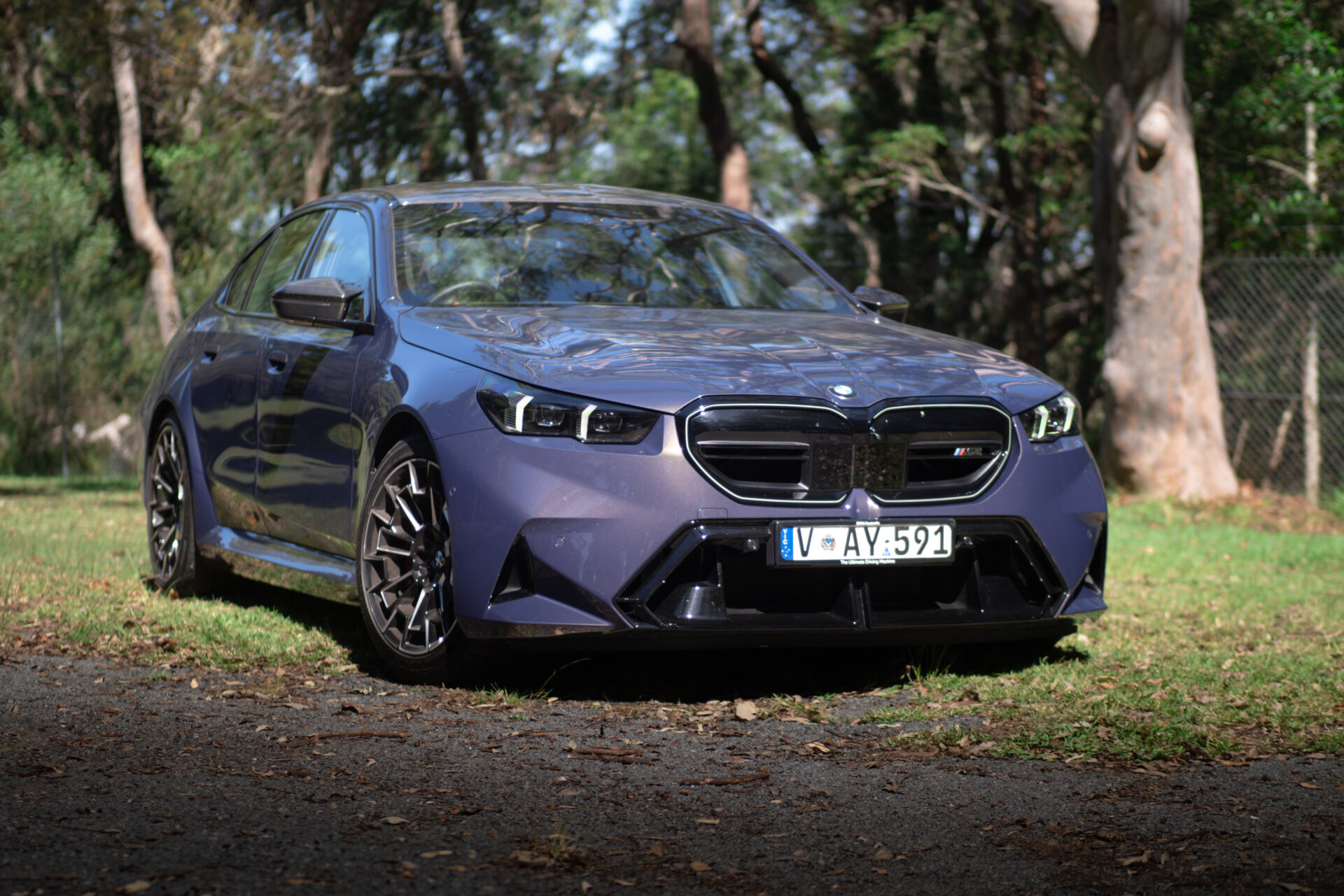I drive the Lotus Elise Sport Cup 250 at the Lotus Only event at Bathurst’s Mount Panorama. The Sport Cup 250 is sharper, more focussed Elise than the Sprint 220. Which is most intriguing.
The first Lotus I ever drove was a mere two years ago, the Sprint 220. It was such an exciting moment for me because I think Lotus is such an amazing company. To stick so wholeheartedly and with such commitment to an ideal set down on the racetrack is hugely admirable. They’re the distillation of racetrack philosophy.
The Elise has been around for 25 years. That makes people at Lotus a bit mad when you say that, but when I say it, it’s a compliment. To make fundamentally the same car for that long and still be in the hunt is quite something.
That one word – fundamentally – is important, though. The Elise Cup 250 is the result of thousands and thousands of changes over the years.
The only thing I wanted from the Sprint 220 was a bit more power. The 250 has that and more. I got to find out what that meant both out on the road and around Mount Panorama.
How much is a Lotus Elise Cup 250 and what do I get?
$107,990 plus on-roads
The Cup 250 is a fairly solid $20,000 more than the Sport 220 on which it is based. Given there aren’t many features in the first place, you can bet that the money isn’t going on big fat plush leather seats, deep woollen carpets and a million stereo speakers.
In fact, you don’t get a stereo but you do get air-conditioning, carbon fibre seats with synthetic suede, leather wheel and handbrake and a tyre pressure sensor. And a tyre repair kit because obviously there’s no space for a spare.
If you want you can drop $9999 on the carbon aero pack or pay individually for the various items in that package. Leather trim is $2999, red calipers $999, tartan trim pack for $2999 (I mean…), a two-speaker stereo for $1199, floor mats for $229, sound insulation for $1099 and a titanium exhaust for $9499. And the two-piece brakes are $4499.
None of it is cheap. But you have to remember, Lotus is (currently) a low volume business. If you ingrates bought more Lotus cars, this stuff would be cheaper.
Safety
Look, it’s not a long list. Two airbags, ABS and stability control. There isn’t an ANCAP safety rating or a EuroNCAP rating. On the upside, the aluminium tub is astonishingly strong.
Warranty and Servicing
Lotus offers a surprising package called 333. You get a three-year warranty, three years of free scheduled servicing (every 12 months or 15,000km) and three years of roadside assistance.
Yes, the warranty is too short, especially at this price point, but before February 1, 2019, I think it was only a 12-month warranty and that was it.
Given the type of the car the Elise is, most owners won’t trouble the 15,000km annual service limit and if you fit aftermarket stuff you might void the agreement, so that’s worth knowing. Also worth pointing out that none of the Germans give you three years of free servicing out of the box.
Look and Feel

The Elise always been a triumph of purity in all three of its distinct guises. The original with its punky little face and rounded butt. The Series II with it’s long headlights and cleaner rear end. And the Series III, which has been with us now for getting on half a decade.
That facelift brought a toned-down set of headlights and a more resolved front end. The profile is basically unchanged, with just the details giving you a clue of what you’re looking at. It’s tiny in person and one of the great shames of the Elise is that not everybody can fit. And if you can fit, you might find it tricky to get in and out.
This is the stuff you put up with as an Elise owner. You’ll see why.

The interior is barely changed from the original. A new instrument cluster here, a new steering wheel there. The open gate shift is wonderful to look at. The nicely turned HVAC controls are nice to touch. You can see that the indicator stalks are from your mate’s clapped-out old Barina, but there’s nothing wrong with them, so it doesn’t matter.
It’s sparse. Bare. But it looks great with all the exposed aluminium, carbon seats and a blanking plate with Elise inscribed across it where the stereo goes.
There is nothing else on the road like a Lotus Elise.
It’s tight, too. I’m not a big fellow, but I literally rub shoulders with my passenger on the road drive. Who himself is not a big fellow. Didn’t matter, we had a blast and we enjoy each other’s company, so that worked out fine. Couldn’t help thinking how happy Elise-owning couples looked because they obviously spend a lot of time in close quarters. I kind of like that idea, I reckon my wife would too.
Rambling now.
Drivetrain

Lotus famously gets its engines from Toyota, in this case starting with a 2ZR-FE. Lotus then, obviously, straps in a supercharger and an engine computer and goes to work. The 250 produces 181kW (250PS) at a lovely 7200rpm and 250Nm between 3500 and 5500rpm.
The tweaks to the 250 might raise the power but the torque figure doesn’t change. Well, it does. While the 220’s engine offers peak torque at 4600rpm, as you can see, the 250’s is spread across a wider range. This is courtesy of charge cooling, which improves the spread.
Top speed rises to 248km/h (+15km/h) and 0-100km/h drops to 4.3 seconds, three-tenths of a second quicker than the 220.
Chassis
This is where your money goes. As if the standard Elise isn’t light enough, the newer Cup 250 knocks a decent chunk of weight to reduce mass from just over 945kg to 931kg. It’s still 8kg more than the standard car, but that’s because it’s carrying a lot of aero bits and some extra engine components. The 181kW/tonne power-to-weight ratio betters the 220’s by 19kW.
Compared to the 220, the higher damper rates at the front (12 percent on compression, 20 percent on rebound) and rear (nine percent compression, 30 percent on rebound) sharpen things up considerably.
The double wishbones stay front and rear, with Eibach springs, Bilstein dampers and an adjustable front anti-roll bar.
The forged alloys come with Advan A052 tyres, 195/50 at the front and 245/45 at the rear. The front wheels are 16s and the rears 17-inches. So the ongoing lack of a spare wheel isn’t an issue.
AP Racing provides the twin-pot calipers and you can go for optional two-piece brakes to knock another 4kg off if you’re keen. And that’s unsprung weight, of course, so that will have a bigger impact than some of the other measures.
Weight saving
Lightweight materials include titanium and carbon fibre, some of which you can see, some you can’t. The carbon sill covers save a mighty 800g and have a 10mm lower profile to make it slightly easier to get in and out. Carbon vents and HVAC control surrounds in carbon save a total of 400g. It’s all real and it looks good.
The bulk of the weight saving comes from carbon fibre seats, forged alloy wheels, lithium-ion battery and a polycarbonate rear screen. If you want to go even lighter, the carbon aero pack replaces the rear wing, bargeboards, hardtop, front access panel, roll hoop cover and engine cover for a total of 11.8kg.
An optional titanium exhaust sheds another 7kg and the open gate on the lovely alloy shifter saves another kilo. Doesn’t sound like a lot, but when you’re starting from a low base, it all adds up.
Aerodynamics

The standard aero package generates a whopping (for a road car) 148kg of downforce. The Cup sports a big splitter, rear wing and what Lotus calls a barge board but is really a big skirt that looks like a step (with No Step written on it). Along with the diffuser at the rear, it’s quite a comprehensive package.
Driving
I spent a lot of time in the Elise on the first day, driving from the base of Sydney’s Blue Mountains, up the Bells Line of Road, down the other side of the mountains. Then we set off the fun way to Oberon and down the back way into Jenolan Caves. I had no idea about that road, and it’s a cracker, although it was covered in junk and clogged with slow-moving Mitsubishis.
Road
I am an unabashed Elise fan. Having waited so long to drive one, the 220 I drove in 2018 blew my mind. I knew they were good, but the purity of this car is unmatched. No power steering, skinny front tyres (relatively speaking) and a complete lack of heft. Few cars weigh as little as an Elise and they certainly don’t have the depth of engineering. And two decades of constant, iterative change to make it the car it is today.
We got a nice sunny day for our long drive to Bathurst, made longer by the more interesting route we chose. Departing from Spicers Sangoma, we wound our way up into the scorched Blue Mountains.
It’s thrilling to drive something clear of the unnecessary detritus we’ve installed in our cars to make motoring bearable. We’ve stacked in all this weight, convinced ourselves we need all these things and we’re kind of right. We drive our cars in traffic and that sucks. One of my favourite cars of all time, the BMW M2 Competition, weighs a whopping 1550kg and only just edges the 250 Cup on power-to-weight.
The Elise draws you out of traffic and into the roads you wouldn’t think to drive. I only drive Bells when someone tells me to. I’m usually bombing up to Katoomba in two tonnes of SUV, temperature-controlled with all sorts of driver aids reducing my involvement.
The Elise gets you back in the game. It’s a car that would make you look for the squiggly lines and spending time in Kathmandu for the winter clothing that means you can whip off the roof. To listen to 1.8-litre’s snarl and supercharger whine and the tyres at work. It’s so wonderful.
The Elise 250 Cup loves every kind of bend, that broad torque curve hauling you out of the tight ones and building speed through the long ones. The gear shift is short and sweet, with a lovely mechanical clack that you feel rather than hear. And the pedals are perfectly-weighted.
The lack of power steering is minor inconvenience at low speeds and a joy at high speeds. All the while, the suspension keeps you informed of what’s going on underneath you and gives you plenty of warning before things turn ugly.
You don’t even have to be going fast in the Elise to enjoy it. Its fluidity in tight switchbacks is almost supernatural. The front tyres bite into corners like a mad dog into tasty flesh, the diff supporting your apex launching ambitions. The instant throttle response makes you feel heroic as you tune the front and rear with your right foot.
I love it. The lack of conveniences melts away when you’re having this kind of fun, all the while burning not very much fuel and not tearing through tyres and brakes.
Track

So this is new. I’ve never driven Mount Panorama. I’d had a sum total of two fast passenger laps around it and only really learnt it the week before in a simulator at a shopping centre. And Lotus just said, “Bring a helmet.” Rightio then.
Track days with other manufacturers are orderly, managed affairs. A leader heads out and builds speed as you build confidence. Nothing wrong with that, it’s a good safety net, especially for those whose ambition exceeds talent by a dangerous margin.
Lotus is rather more trusting of its customers, and of me. We had a briefing which amounted to, “Don’t be a dick and don’t hold anyone up”, advice for slower cars and plenty of encouragement to enjoy ourselves around this fantastic track. Keep it off the walls, remember its reputation.
You have to remember that a lot of these folks spend a lot of time driving their cars on track so know what their cars can do. I didn’t. It was ever-so-slightly intimidating.
It was also absolutely brilliant. Mountain Straight’s bumps and the dip are quite something in a 900kg car at north of 180km/h. Gentle brake into turn 2, down the gears and the torque is right there for you as you start the climb.
Pretty much once you’re off that Mountain Straight, you’re putting lateral load through the wheels until Forrest’s Eblow. There aren’t many straight lines up there, and if there are, they’re short and a prelude to more close encounters with concrete walls or gravel traps that more often than not deposit you into a concrete wall.
Because the Elise’s tub is so stiff, the platform is a cracker to work with – it means the body can roll, delivering the sort of compliance M or AMG can only dream of. Turn in, feel the tyres start to work and you can start making choices about braking and throttle.
Every lap I got faster and deeper into corners, getting on the throttle early off the apex, realising that this little thing has an entire deck of cars up its sleeve. It’s so quick, the steering communicative and darty. Nothing bad happens suddenly in an Elise and it builds trust with the driver. It’s wonderful and I can’t recommend it enough.
Redline Recommendation

I set no records but I had the time of my life on my first laps of Bathurst in anger and my first track laps in an Elise. It was so easy, so fast and so much actual fun. Some cars are a handful on a track or unnervingly uncommunicative while the computers do all the work and you hang on.
Not so the Elise. It doesn’t have anything but a well-tuned stability control system and an excellent Race mode. There is nothing on the Elise Cup 250 that doesn’t need to be there and you can feel it. It’s all about the drive. You and the road. One on one.
I’ve always wanted an Elise and now I am sick with envy for those who do have one. You can only really use it a few times a year but you will remember every single drive in an Elise.





Leave a Reply